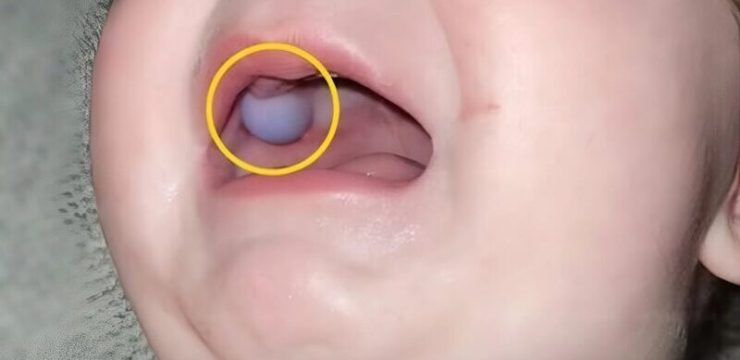When people think of braces, they often picture metal brackets and wires working together to create a straight, flawless smile. However, another crucial component plays an essential role in orthodontic treatment—intermaxillary elastic bands. These tiny yet powerful rubber bands contribute significantly to the alignment of teeth and correction of bite issues. While they might seem like a small detail in the grand scheme of orthodontics, their impact is far from insignificant.

Intermaxillary elastic bands work alongside brackets and wires to ensure teeth move in the right direction, leading to a well-aligned bite and improved dental health. So, what exactly are these bands, and why do they matter so much? Let’s take a closer look at their function, benefits, and importance in orthodontic treatment.
What Are Intermaxillary Elastic Bands?
Intermaxillary elastic bands, also known as braces elastics or orthodontic rubber bands, are small, stretchy loops made of medical-grade rubber. These bands attach to specific brackets on the upper and lower teeth, creating the necessary tension to shift teeth into proper alignment and correct jaw positioning.
While they might seem minor compared to metal brackets and wires, these elastics provide targeted force, helping guide teeth into their final positions and ensuring a well-balanced bite. Without them, braces alone wouldn’t be as effective in achieving optimal results.
Why Are Elastic Bands Important in Orthodontics?
Braces don’t just straighten teeth—they also correct bite misalignment. Elastic bands provide the extra force needed to address complex orthodontic issues, including:
- Overbites – When the upper teeth extend too far over the lower teeth.
- Underbites – When the lower teeth protrude beyond the upper teeth.
- Crossbites – When the upper and lower teeth do not align correctly from side to side.
By consistently applying pressure, these elastics gradually reposition the teeth and jaws, ensuring a healthier and more functional bite.
How Do Elastic Bands Work with Braces?
While brackets and archwires create general movement, elastic bands fine-tune tooth alignment and bite correction. Orthodontists strategically place these bands on brackets to facilitate precise movements based on each patient’s needs:
- Overbite Correction: Bands connect the front upper teeth to the back lower teeth, pulling the upper teeth back and pushing the lower teeth forward.
- Underbite Correction: Bands attach the back upper teeth to the front lower teeth, encouraging the upper teeth to move forward while repositioning the lower teeth backward.
- Crossbite Adjustment: Elastic bands are positioned to correct side-to-side misalignment, ensuring the upper and lower teeth meet correctly.
By applying controlled and consistent pressure, these elastic bands help orthodontists correct bite issues that brackets alone cannot fix.
Benefits of Intermaxillary Elastic Bands
Although they may be small, these rubber bands offer significant advantages in orthodontic treatment:
✅ Faster Treatment Time – The added force helps speed up tooth movement, often reducing overall treatment duration. ✅ Improved Bite Alignment – Elastic bands ensure the upper and lower jaws are properly aligned for a functional, comfortable bite. ✅ Targeted Adjustments – Unlike brackets and wires, elastics can be positioned in specific ways to address individual bite concerns. ✅ Customizable Force – Orthodontists can adjust the bands’ placement and tension to match each patient’s needs, ensuring optimal results.
While they may seem like a small component of braces, elastic bands play an essential role in achieving a well-aligned smile.
What Are Orthodontic Elastic Bands Made Of?
Orthodontic elastics are crafted from high-quality, medical-grade rubber. Designed for continuous use, they are durable, hypoallergenic, and capable of withstanding prolonged tension. They also come in different sizes and strengths, allowing orthodontists to customize treatment plans based on individual requirements.
Tips for Proper Use and Care
To get the most out of elastic bands, patients should follow their orthodontist’s instructions carefully. Here are some essential guidelines:
- Wear Them as Directed: Consistency is key—patients should wear their elastics as instructed, even while sleeping, to avoid delays in treatment progress.
- Replace Bands Regularly: Over time, elastic bands lose their strength. Changing them daily ensures they maintain the necessary corrective force.
- Follow Placement Instructions: Since each patient’s orthodontic plan is unique, it’s crucial to wear elastics exactly as prescribed by the orthodontist.
- Remove Before Eating: Taking out elastics while eating prevents unnecessary stretching or breakage, ensuring they remain effective.
Following these steps will lead to a smoother orthodontic journey and more efficient results.
Adjusting to Wearing Elastic Bands
At first, wearing elastics may feel uncomfortable, with patients experiencing mild soreness or tightness. However, this discomfort is temporary and a sign that the bands are doing their job. Most patients adapt within a few days, and the minor inconvenience is well worth the long-term benefit of a well-aligned, confident smile.
The key is patience—committing to consistent wear will ensure faster progress and more effective results.
Conclusion: Small Bands, Big Results
Intermaxillary elastic bands may not always receive the attention that brackets and wires do, but they are one of the most critical components in orthodontic treatment. These small but powerful tools help ensure proper alignment, correct bite issues, and create a long-lasting, healthy smile.
Wearing elastics requires commitment, patience, and daily maintenance, but the rewards are undeniable. A properly aligned smile not only enhances appearance but also promotes better oral health and overall well-being.
So, the next time you see someone wearing tiny elastic bands on their braces, remember—they’re not just following an orthodontic routine. They’re actively working toward a confident, beautiful smile that will last a lifetime.





